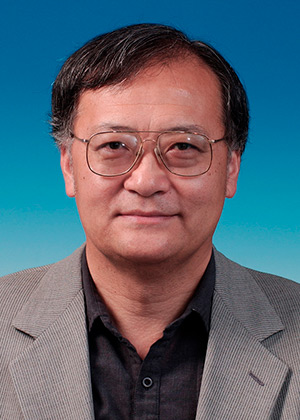Faculty Profile
 Shiao-Chun David Tu
Shiao-Chun David Tu
Professor
Department of Biology and Biochemistry
Research Division: Biochemistry (Primary)
Office: HSC 410
Contact: dtu@uh.edu - (713) 743-8359
Education: Ph.D., Cornell University, 1973
My laboratory is mainly interested in enzymology. One major line of research focuses on flavin-dependent monooxygenases (or hydroxylases) that catalyze the activation of molecular oxygen for substrate hydroxylation. Although the physiological significance of such reactions is widely recognized, much remains to be elucidated with respect to the structure and mechanism of these hydroxylases. We have been employing a combination of biochemical, chemical, biophysical and molecular biological approaches to study the bacterial luciferase/flavin reductase couple and other selected flavohydroxylases. A better understanding of the catalysis of these enzymes is emerging. Recently we began to investigate the mechanisms of reduced flavin transfer from flavin reductases to luciferase, a novel area of metabolite channeling which has already led us to exciting findings.
Another area of research is directed toward the elucidation of molecular mechanisms for the activation and resistance of antituberculosis drugs by Mycobacterium tuberculosis. The recent and continuous increase of drug-resistant strains of M. tuberculosis is a serious problem world-wide. We are applying multi-facet approaches similar to those described above to study the structure and function of enzymes involved in drug activation and/or resistance in M. tuberculosis with the goal of developing new drugs for curing tuberculosis.
As an extension of our basic studies on enzymes, we are also interested in enzyme-related biotechnologies such as the development of diagnostic kits, drug design, bioremediation, DNA sequencing and enzyme bioengineering.
- Li, X. and Tu, S.-C. (2006) Activity Coupling of Vibrio harveyi Luciferase and Flavin Reductase (FRP): Oxygen as A Probe. Arch. Biochem. Biophys. 454, 26-31.
- Li, X., Chow, D.-C., and Tu, S.-C. (2006) Thermodynamic Analysis of the Binding of Oxidized and Reduced FMN Cofactor to Vibrio harveyi NADPH-FMN Oxidoreductase FRP Apoenzyme. Biochemistry 45, 14781-14787.
- Lei, B., Wang, H., Yu, Y., and Tu, S.-C. (2005) Redox Potential and Equilibria in the Reductive Half-Reaction of Vibrio harveyi NADPH-FMN Oxidoreductase. Biochemistry 44, 261-267.
- Huang, S. and Tu, S.-C. (2005) Effects of Iodide on the Fluorescence and Activity of the Hydroperoxyflavin Intermediate of Vibrio harveyi Luciferase. Photochem. Photobiol. 81, 425-430.
- Li, C.-H. and Tu, S.-C. (2005) Active Site Hydrophobicity Is Critical to the Bioluminescence Activity of Vibrio harveyi Luciferase. Biochemistry 44, 12970-12977. .
- Li, C.-H. and Tu, S.-C. (2005) Probing the Functionalities of Glu328 and Ala74 of Vibrio harveyi Luciferase by Site-Directed Mutagenesis and Chemical Rescue. Biochemistry 44, 13866-13873.
- Russell, T. R. and Tu, S.-C. (2004) Aminobacter aminovorans NADH:Flavin Oxidoreductase His140: A Highly Conserved Residue Critical for NADH Binding and Utilization. Biochemistry 43, 12887-12893.
- Lei, B., Ding, Q., and Tu, S.-C. (2004) Identity of the Emitter in the Bacterial Luciferase Luminescence Reaction: Binding and Fluorescence Quantum Yield Studies of 5-Decyl-4a-hydroxy-4a,5-dihydroriboflavin-5-phosphate as A Model. Biochemistry 43, 15975-15982.